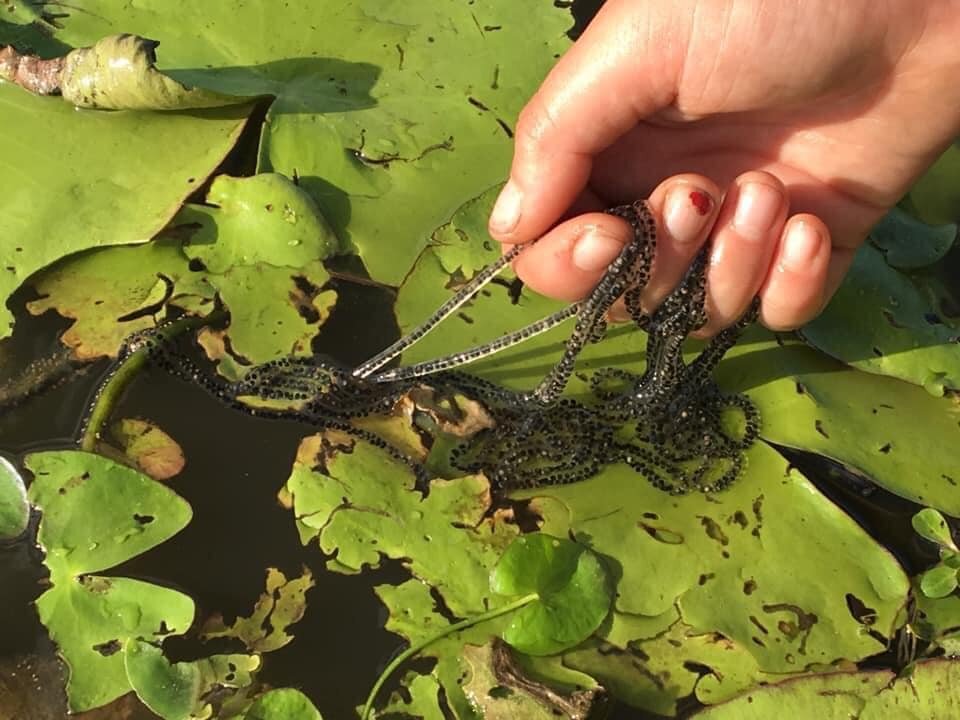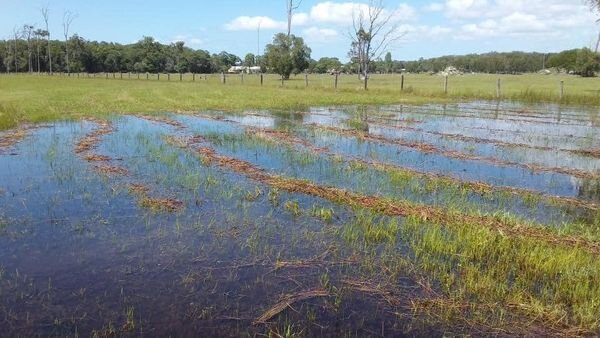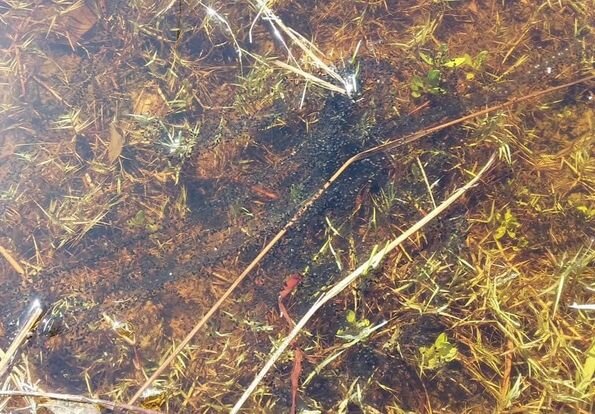Our friends form Clarence Valley Conservation in Action are serious about cane toad control. With this warm wet weather we know cane toads will be breeding. See detailed instructions from Scott Lenton from CVCIA for finding and destroying cane toad spawn (eggs) and tadpoles.
EVER WANTED TO FIND TOAD SPAWN OR EGGS?
By Scott Lenton.
Well, now is the time if you live in the lower Clarence Valley or Northern Rivers region of NSW. Toads will be highly motivated to breed as a direct result of the current significant rain event, especially since it follows a lengthy period of relatively dry weather. Finding toad spawn can come down to luck, however at present you are more likely to have luck on your side. Plus, the more you look the more you find
Here are some tips:
When to look - Anytime during the day over the next few days when the weather lets you. Daytime is better as it is easier to look into the water, especially if there is a bit of sunlight. It is also safer during the day.
If you know toads have bred in a particular waterbody before then it is highly likely that they will continue to breed at that site. Toads are creatures of habit and once they find suitable sites to breed they return time after time.
What to take with you
A friend, a bucket or 2, a fine mesh scoop net if you have one, your prescription glasses (if applicable), polarised sunglasses to help to cut down glare on the water, phone to take photos and wear gumboots or old joggers. Safe footwear, a partner and a bucket are the essential items.
Where to look - anywhere fresh water is pooling. Whether it’s a dam, wheel rut full of water, flooded paddock (see photo), wetland or other puddle of water toads may breed in it and so it is worth checking. Look around the edge and where the water is up to knee deep.
Water that is in an open area, gets lots of sun, and has low-sloping sides are preferred by toads as the water will be warmed by the sun and easy for them to get into and out of. Shaded ponds or flowing water is less likely to attract toad breeding.
What to look for - long jelly-like strings of eggs wrapped around sticks, grass or aquatic vegetation (see photo). Toad spawn is very unique and no frog in Australia lays eggs like this. Toad eggs sink. If you find floating eggs or eggs in clusters or clumps then they are native frog eggs and need to be left alone.
When looking on these prime post-rain days if the weather is overcast you will sometimes find the toads/parents in the water. So keep an eye out and grab them too if they are about. Bonus!
If you don’t find any toad spawn then that’s also great. However, if you know toads frequent the area then have a look again in a day or 2, especially if the wet weather persists.
What to do if toad spawn found - once you are confident you have found toad spawn/eggs it should be removed from the waterway. Firstly, take a photo. Then, using your hands carefully remove the strings of eggs (see photo) and slide them into the net or bucket. It is easier if one person holds the bucket and the other grabs the eggs. When eggs are in deeper water or the edges of the waterbody are slippery you may need to use a net to remove the eggs. Hands are best though if possible. Remember to wash your hands before you next eat with them!
Freshly laid eggs will be surprisingly tough and are less prone to breaking apart unless they get snagged. Eggs that are more than 36 hrs old will be more fragile as the eggs hatch out after only 2-3 days.
Get as much as you can. If the water is murky, well vegetated or you are not 100% sure you have got all of it use your hand and fingers like a rake to see if there is more in the immediate area. There will often be more.
Once you collect it all, celebrate with a high 5 and keep checking for more. At times several females will lay in the same waterbody. I have removed up to 5 lots of spawn from one small area of flooded paddock at the same time.
How do I know how many eggs there are - If you want to measure your success then we recommend you weigh the eggs. Simply weighing the eggs gives you a quick indication of success you can compare to future hauls. If you really want to get more serious with a count (as some of us tragic toaders have been known to do ) then follow these steps:
1. Using kitchen scales weigh a sample (10-50 grams) of eggs (including the ‘jelly’). Record the weight in grams.
2. Count how many eggs (the black dots in the string of ‘jelly’) there are in the weighed sample. Write the number down.
3. Weigh all the eggs you found (including the small sample) and record that weight in grams.
4. Now do the maths. Divide the total weight (step 3) by the sample weight (step 1) and multiply by the number of eggs in the sample (step 2). The answer will be a good estimate of how many eggs were in the batch/s you found.
The same method of estimating numbers can be used when you find toad tadpoles.
How to dispose of the eggs - Toad eggs are poisonous to animals. Hence, it is best if toad eggs are disposed of so they cannot be eaten by something like your pet or a native reptile, etc.
My preferred way to dispose of the spawn safely is to bury it in the garden in a hole about 30cm deep. Once back filled it should be out of reach of pets digging it up and it will not harm your plants. In fact, it will help fertilise them. Alternatively, the spawn can be frozen in a plastic container and then put in the red bin on garbage night.
What if I find tadpoles instead - Take a photo and confirm ID before removing them. Post the photo on this page and ask for confirmed identification. Advice on how to collect can be provided or found on this page if necessary.
Once toad eggs hatch the tadpoles usually take 3-4 weeks to emerge as baby toads. So if the tadpoles are toads then there is time to get back and remove them. If they are frog tadpoles then they can be left to develop.
Thank you in advance for looking . A large adult female toad can lay 30-35,000 eggs up to two times a season and removing spawn is so much easier than removing toad tadpoles or the even less pleasant challenge of catching thousands of baby toads (metamorphs) once they emerge.




